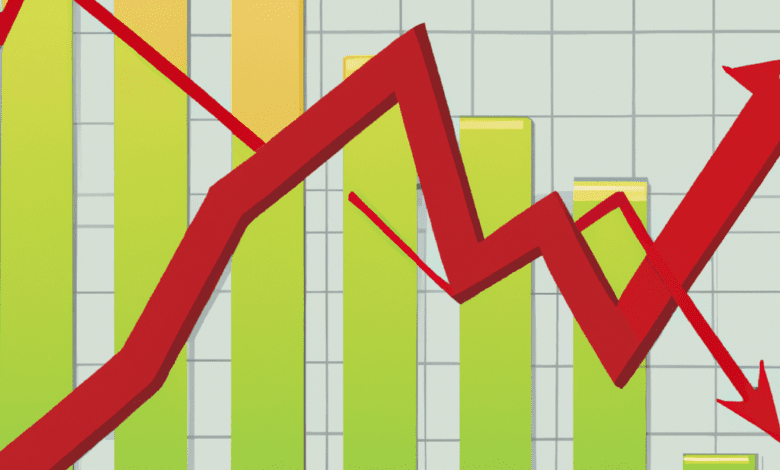Navigating Economic Currents: Latest Insights on Inflation, Unemployment, and Key Macroeconomic Indicators

In recent months, the economic landscape has been marked by a series of fluctuations that continue to shape the financial well-being of households and businesses alike. As inflation rates rise and fall, and unemployment figures paint a complex picture of the labor market, it becomes increasingly crucial to dissect these macroeconomic indicators to understand their broader implications. This article delves into the latest trends in inflation, providing an analysis of current data and future projections that inform both policymakers and consumers. We will also explore the state of unemployment, examining the nuances of labor market recovery and the persistent challenges that lie ahead. Finally, we will present a comprehensive overview of key macroeconomic indicators, evaluating the overall health of the economy and what it may signal for the future. Join us as we navigate through these vital metrics to gain a clearer perspective on the economic climate and its potential trajectories.
- 1. **Current Trends in Inflation: Analyzing the Latest Data and Projections**
- 2. **Unemployment Rates: Insights into Labor Market Recovery and Challenges Ahead**
- 3. **Macro Indicators at a Glance: Assessing Economic Health and Future Outlook**
1. **Current Trends in Inflation: Analyzing the Latest Data and Projections**
Inflation has remained a focal point of economic discussions as central banks and policymakers navigate the complexities of post-pandemic recovery. Recent data indicates that inflationary pressures, which surged dramatically in the aftermath of COVID-19, are beginning to stabilize, albeit at levels that still exceed pre-pandemic norms. As of the latest reports, year-over-year inflation rates have shown signs of moderation, with many analysts pointing to a gradual easing in supply chain disruptions and a return to more stable consumer demand patterns.
One of the most significant contributors to the recent inflation trends has been the fluctuation of energy prices. After peaking in 2022, global oil prices have shown a downward trajectory, providing some relief to consumers and businesses alike. Additionally, food prices, which had experienced sharp increases due to various factors including climate-related disruptions and labor shortages, have also started to stabilize. This broader moderation in key sectors is reflected in the latest Consumer Price Index (CPI) data, which indicates a slowing pace of price increases.
Looking forward, projections suggest that inflation may continue to decline but remain above the target levels set by central banks, particularly in the United States and Europe. The Federal Reserve and the European Central Bank have signaled their intent to maintain a cautious approach to monetary policy, balancing the need to curb inflation without stifling economic growth. Analysts predict that inflation will gradually settle around the 2-3% range, contingent on several factors including wage growth, global supply chain stability, and geopolitical developments.
Moreover, while inflation appears to be tapering, the underlying dynamics continue to evolve. Core inflation, which excludes volatile items such as food and energy, remains a critical metric for assessing persistent inflationary trends. Some sectors, particularly housing and services, continue to experience upward price pressures, driven by robust consumer demand and tight labor markets. This nuanced landscape underscores the importance of closely monitoring not only headline inflation figures but also the broader economic indicators that influence consumer behavior and business investment.
In summary, the current trends in inflation reflect a complex interplay of factors that have shifted significantly over the past year. While there are positive signs of easing inflationary pressures, the economic outlook remains uncertain, necessitating vigilant monitoring and adaptable policy responses to ensure sustainable growth.
2. **Unemployment Rates: Insights into Labor Market Recovery and Challenges Ahead**
The labor market has shown signs of recovery in recent months, with unemployment rates steadily declining from the peaks experienced during the pandemic. As of October 2023, the national unemployment rate stands at approximately 4.1%, a significant drop from the high of 14.8% recorded in April 2020. This recovery reflects a resurgence in job creation across various sectors, particularly in hospitality, healthcare, and technology. Employers are increasingly optimistic, leading to new hiring initiatives as businesses adapt to changing consumer demands and embrace digital transformation.
However, the labor market is not without its challenges. Despite the positive trends, there are persistent disparities in unemployment rates among different demographic groups, with minorities and younger workers facing higher unemployment than their counterparts. Additionally, the lingering effects of the pandemic have contributed to shifts in workforce dynamics, including a notable rise in remote work and an increased emphasis on work-life balance. These changes have led to difficulties in filling certain positions, particularly in sectors that require in-person engagement, such as retail and service industries.
Furthermore, the phenomenon known as the "Great Resignation" continues to impact the labor market, as many workers reevaluate their job satisfaction and career paths. This trend has resulted in a high turnover rate, forcing employers to compete for talent through enhanced benefits and flexible work arrangements. While these adjustments are beneficial for workers, they pose challenges for companies striving to maintain productivity amidst fluctuating staffing levels.
Looking ahead, the path to a fully recovered labor market remains uncertain. Economic factors, such as inflationary pressures and shifts in consumer behavior, could influence hiring trends. Additionally, the potential for future public health concerns could disrupt recovery efforts. Policymakers and business leaders must remain vigilant and adaptable, addressing both the immediate needs of the workforce and the broader structural changes that are reshaping the labor landscape. The road to a resilient labor market will require collaborative efforts to support job seekers, enhance skills training, and ensure equitable opportunities for all workers.
3. **Macro Indicators at a Glance: Assessing Economic Health and Future Outlook**
In recent months, macroeconomic indicators have painted a complex picture of the economy, revealing both resilience and emerging challenges. Inflation, a key concern for policymakers and consumers alike, has shown signs of moderation. After peaking in 2022, many countries have reported a gradual decline in inflation rates, driven by easing supply chain disruptions and stabilizing energy prices. Central banks have responded with a more cautious approach to interest rate hikes, balancing the need to combat inflation with the imperative to support economic growth.
Unemployment rates have remained relatively low, reflecting a tight labor market characterized by robust job creation in various sectors. However, there are signs of a potential slowdown, as some industries face headwinds due to higher borrowing costs and shifts in consumer demand. The labor force participation rate has also been a focal point, with efforts to increase workforce engagement among underrepresented groups becoming increasingly important.
Other macroeconomic indicators, such as Gross Domestic Product (GDP) growth and consumer confidence, provide further insights into economic health. While GDP growth has shown resilience, bolstered by consumer spending and business investment, forecasts suggest a more tempered outlook in the coming quarters. Consumer confidence, although recovering from earlier lows, remains sensitive to fluctuations in economic conditions, including inflationary pressures and geopolitical uncertainties.
Together, these indicators offer a nuanced assessment of the current economic landscape. Policymakers and analysts will need to navigate these dynamics carefully, as the interplay between inflation, employment, and growth will shape the economic trajectory moving forward. The outlook remains uncertain, with potential risks from external shocks and domestic policy decisions that could influence both short-term performance and long-term stability. As we look ahead, close monitoring of these macro indicators will be crucial for understanding the evolving economic environment and its implications for households and businesses alike.
In conclusion, the current landscape of macroeconomic indicators presents a complex but insightful picture of our economy. The latest trends in inflation reveal both challenges and cautious optimism, as policymakers grapple with rising prices while attempting to support sustainable growth. Meanwhile, the labor market shows signs of recovery, although persistent unemployment in certain sectors underscores the need for targeted interventions to ensure inclusivity in this rebound. As we assess the broad spectrum of macroeconomic indicators, it becomes clear that while there are positive developments, significant hurdles remain. Moving forward, continued vigilance and adaptive strategies will be essential as we navigate the evolving economic landscape, ensuring that recovery efforts are both effective and equitable. Ultimately, understanding these dynamics is crucial for individuals, businesses, and governments alike, as we collectively strive for a resilient and prosperous economy.





